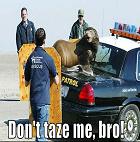iamspamus
Posts: 433
Joined: 11/16/2006
From: Cambridge, UK
Status: offline

|
quote:
ORIGINAL: Marshall Ellis
Hey guys:
Any Turkish fans out there?
I am trying to find some biographical infomation on the Turkish leaders (Kushanz Ali, Pechlivan Khan, etc.) Does anybody have any information on these guys or an idea of where I could get them?
Thank you
Hey Marshall Ellis,
Well, I looked through my library and didn't find much on the the leaders. Lots on Turks, but they just say stuff like Nap beat 20,000, blah, blah, blah. However, online this is what I did find. Not GREAT sources, but hey what do we expect?
1799 Ottomans vs. Napoleon at Mt Tabor
Pasha of Damascus - Ahmed Basha Al-Jazzar or Djezzar
http://en.wikipedia.org/wiki/Battle_of_Mount_Tabor
Ahmet Pasha in 1811 v. Kutusov
http://en.wikipedia.org/wiki/Russo-Turkish_War,_1806-1812
In this bottom section of a wargame listing I found the first guy Bayrakdar (Alemdar Mustafa Pasha) in The Janissaries by Godfrey Goodwin, pp. 200-209. I think that he died in 1809, but appeared to be "decent".
Ahmed (Laz Ahmed Agha) may be the same as Ahmet Pasha above, but from Wiki, at least, I think he died in 1811. If you count "going to peace and giving up Bessarabia" to the Russians just before Napoleon invades Russia, as wily and getting an armistace, then ok...
Turkey
The Ottoman Empire has the weakest generalship of the major powers. Though there are six Turkish leaders, only three of them are available at any one time. Bayrakdar, Ebubekir and Seyit Ali start the game in play. Pechlivan, Kuschanz Ali and Ahmed enter play only if the Janissary Revolt card is played, in which case any of the other three still in play are removed. This makes the New Leader card useless to the Turkish player, but on the plus side there is the Banner of the Prophet. This can be given to one leader, who then raises his rating by 1 and never vacillates (through card play, a leader can be forced to retreat). Historically this was carried by Alemdar Mustafa "Bayrakdar" Pasha, but players usually give it to Pechlivan Khan or Kuschanz Ali (as they'll be around after the Revolt card appears).
During the Napoleonic Period, Turkey was at war with Russia from 1806 until 1811, signing an armistice in early 1812 before the campaign season opened. The Turks also repelled a British naval attack in 1807.
Bayrakdar
Alemdar Mustafa Pasha of Silistria, known as "Bayrakdar" (the Banner Bearer). When the Russians invaded in 1806 he quickly mobilized his provincial army to oppose them. With the Sultan's army and court in disarray, he formed an alliance of Balkan governors and incited popular resistance against the Russians. He defeated Miloradovitch's Russian army at Rustchuk in 1807, and was called to the capital to serve Sultan Selim III but arrived to find him overthrown. When the new Sultan Mahmut II was in turn assailed by rebel Janissaries in 1808, Bayrakdar was trapped without his loyalists. Rather than submit to their tortures Bayrakdar ignited the capital's main powder store, vaporizing himself, 300 of his bodyguard and 300 rebels.
Ebubekir
Ebubekir Pasha commanded the Ottoman forces that put down the Serbian revolt of 1804. He suffered the indignity of being kidnapped by Janissaries and held for ransom, but regained the Sultan's favor. In 1807 he went to the eastern front to command all Ottoman forces in the Caucasus, but failed to hold the important border fortresses there and was relieved after the Janissary revolt toppled Selim III.
Seyit Ali
Seyit Ali commanded the Ottoman fleet in the 1807 campaign, successfully plaguing Russian supply lines and avoiding battle with the more powerful fleet led by Senyavin. He finally accepted battle with the Russians at Lemnos in July, 1807, and after a hard-fought engagement both sides claimed victory: the Russians sank more ships, but the Ottomans drove them away from the Straits and allowed grain convoys to reach the capital. Bayrakdar fired him later that month for failing to protect Selim III from his murderers. However, Seyit's actual crime appears to have been accusing Bayrakdar of "weeping like a woman rather than seeking vengeance like a man" upon discovering Selim's corpse. Bayrakdar sent him into exile.
Ahmed
Laz Ahmed Agha, named Grand Vizier in 1811, led the Ottoman armies during the 1811 campaign on the Danube. Inexperienced but energetic, he forced Kutuzov back across the big river and re-captured Silistria and Nikopol. He defeated Kutuzov again at Rustchuk, but allowed his army to become trapped on the north bank. The wily Ahmed managed to extract an armistice from the Russians, however, and rescued his army from disaster.
Pechlivan
Pechlivan Khan rose to army command out of the officer ranks rather than those of the provincial governors (unusual in this period, when career soldiers were distrusted). He lost to Bagration at Tartaritza in late 1809, but in the summer of 1810 inflicted three stunning defeats on Kamenski's Russians. He also led the inspired defense of Bazardzik, but plunged into the hand-to-hand fighting himself and was killed.
Kuschanz Ali
Pechlivan's command went to Kuschanz Ali, another old soldier. He defeated Kamenski at Shumla in 1810, but then lost the battle of Batin in August of that year. In the next year's campaign he served under the command of the Grand Vizier.
http://www.avalanchepress.com/seleaders.php
So, anyway, I think that this could cover the leaders of EIA.
Jason
< Message edited by iamspamus -- 4/20/2007 2:40:59 AM >
|
 Printable Version
Printable Version









 good question!
good question!


 New Messages
New Messages No New Messages
No New Messages Hot Topic w/ New Messages
Hot Topic w/ New Messages Hot Topic w/o New Messages
Hot Topic w/o New Messages Locked w/ New Messages
Locked w/ New Messages Locked w/o New Messages
Locked w/o New Messages Post New Thread
Post New Thread